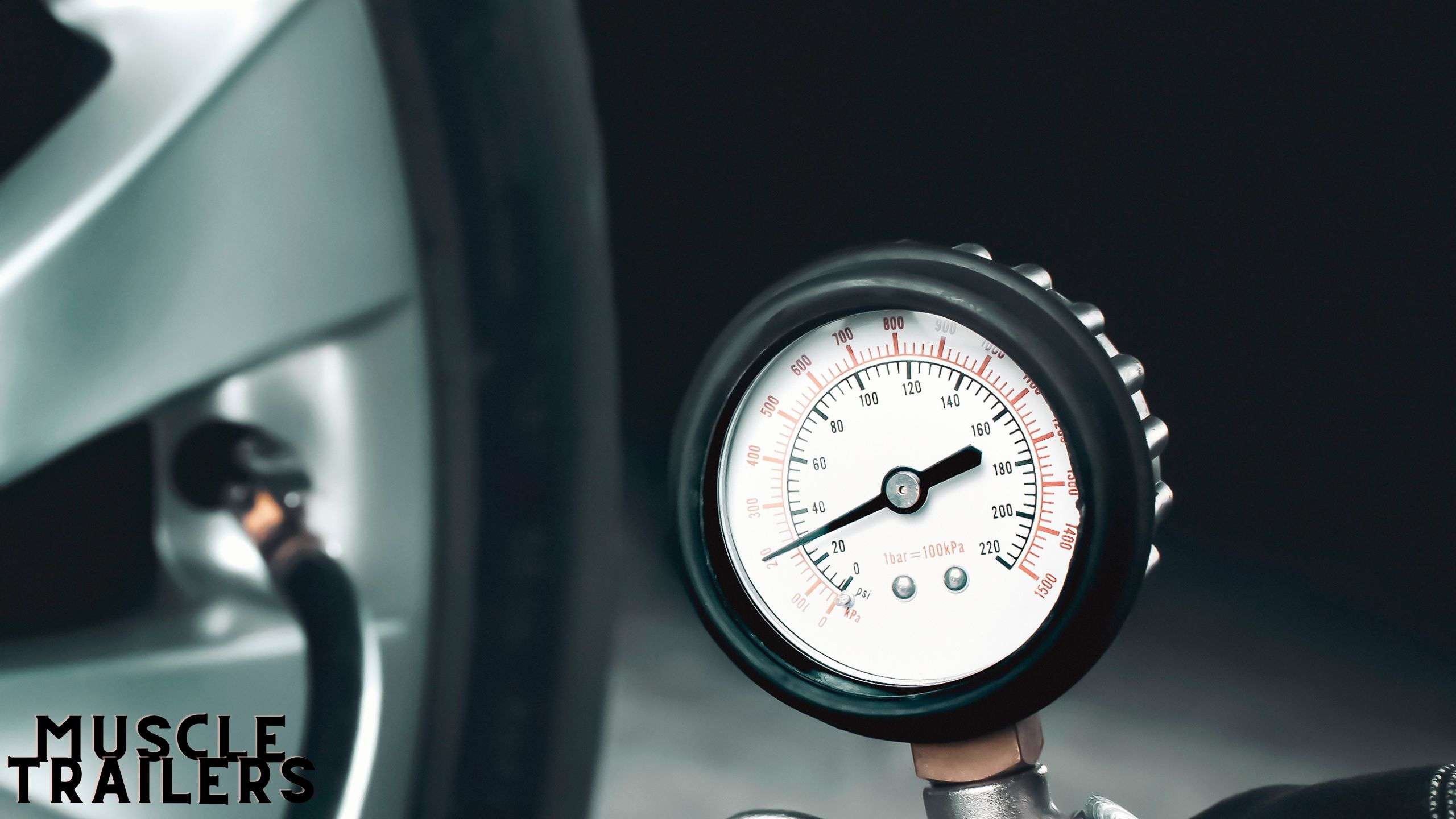
Revolutionizing Tyre Maintenance: The Power of Tyre Pressure Sensors
Understanding tyre pressure sensors
Navigating the world of tyre maintenance, it’s crucial to understand the components that make up the wheel and tyre systems. One such essential component is the tyre pressure sensor.
What is a tyre pressure sensor?
A tyre pressure sensor is a vital part of modern vehicles, designed to monitor and alert drivers to potential problems with their tyres, such as low tyre pressure or TPMS (Tyre Pressure Monitoring System) malfunctions.
These sensors are part of a larger system known as the Tyre Pressure Monitoring System (TPMS). The purpose of this system is to warn drivers when one or more tyres are significantly underinflated, potentially creating unsafe driving conditions. The TPMS low tyre pressure indicator is a yellow symbol that illuminates on the dashboard instrument panel.
There are two types of TPMS: indirect and direct. Indirect TPMS uses wheel speed sensors to measure the rate of revolution of each wheel. If a wheel starts spinning faster than expected, the computer calculates that the tyre is underinflated and alerts the driver. On the other hand, direct TPMS uses pressure monitoring sensors within each tyre to monitor specific pressure levels. These sensors send data to a centralised control module, where it’s analysed, interpreted, and transmitted to the dashboard, where the indicator light illuminates. Direct TPMS provides actual tyre pressure readings from inside the tyre (Bridgestone Tyre).
The Importance of Tyre Pressure Sensors
Tire pressure sensors play a crucial role in maintaining the correct tire pressure, which cannot be overstated. Maintaining the correct tyre pressure can extend the lifespan of the tyres, as it reduces wear and tear. Furthermore, TPMS ensures proper tire inflation, improving fuel efficiency by preventing underinflated tires that can lower gas mileage.
Furthermore, TPMS can provide real-time tyre pressure information, allowing drivers to monitor and adjust tyre pressure as needed for optimal performance and safety.
However, it’s worth noting that a TPMS is not a replacement for manual air pressure checks and should be considered an additional tool in car maintenance.
The National Highway Traffic Safety Administration (NHTSA) mandates that all new vehicles sold since 2008 must have a TPMS, which was passed under the Transportation Recall Enhancement, Accountability, and Documentation (TREAD) Act (Tohaas Tire).
Understanding the power and importance of tyre pressure sensors is a crucial part of maintaining your vehicle’s wheels and tyres and ensuring safe and efficient driving.
Types of Tyre Pressure Monitoring Systems
There are two main types of tyre pressure monitoring systems (TPMS): direct TPMS and indirect TPMS. Each type of TPMS offers unique advantages and caters to varying needs and preferences.
Direct TPMS and its Advantages
Direct TPMS provides actual tyre pressure readings from inside the tire. This system is not prone to inaccuracies caused by tyre rotations or replacements and requires simple resynchronisation after such changes.
Direct TPMS utilises pressure monitoring sensors within each tyre to monitor specific pressure levels. The sensors provide tire temperature readings and deliver all the data to a centralized control module for analysis and interpretation.
The advantages of direct TPMS include:
- Immediate indication of underinflated tyres, allowing for prompt fixing of the issue before any damage can occur.
- The provision of tyre temperature readings in addition to tyre pressure readings (source).
- Long battery life, with the batteries inside the sensors usually lasting for about a decade.
However, direct TPMS is more expensive overall than indirect TPMS and may require costly tools for resynchronization. If the battery is drained, the sensor must be replaced since it is rarely serviceable.
Indirect TPMS and its Advantages
Indirect TPMS is a less expensive alternative to direct TPMS. It requires less programming and maintenance and has less overall installation maintenance compared to direct TPMS.
However, it may become inaccurate if a bigger or smaller tyre is purchased or when tyres are unevenly worn, and it needs to be reset after properly inflating every tyre and routine tyre rotation.
The choice between direct and indirect TPMS depends on your specific needs and budget. Both systems provide valuable information about tyre pressure, helping to improve vehicle safety and fuel efficiency. For more information about tyre maintenance and accessories, check out our articles on tyre chains for snow, lug nuts, and tyre pressure gauges.
How Tyre Pressure Sensors Work
Understanding the mechanics behind the tyre pressure sensor system can provide valuable insights, especially for small business owners and transport companies that rely heavily on vehicle fleets. These systems use innovative technologies to monitor tyre pressure accurately and in real-time.
TPMS sensors and wireless technology
Tyre Pressure Monitoring System (TPMS) sensors typically utilise wireless technology to operate efficiently. These sensors monitor the tire pressure and send the data to a centralized control module in the vehicle. The mode of transmission usually involves radio frequency (RF) signals, which carry the collected data from the sensors to the vehicle’s onboard computer.
Direct TPMS, for instance, uses pressure monitoring sensors within each tyre to monitor specific pressure levels. Not only does it provide actual tyre pressure readings from inside the tyre, but it also offers an immediate indication of underinflated tires. This immediate indication allows for prompt fixing of the issue before any damage occurs. Moreover, some direct TPMS can also provide tyre temperature readings in addition to tyre pressure readings.
The Role of the Onboard Computer
The vehicle’s onboard computer plays a pivotal role in the operation of TPMS. Once the TPMS sensors collect and transmit the data using RF signals, the onboard computer analyses and interprets this information. If a tyre’s pressure drops below the recommended threshold, the TPMS sensors send a signal to the vehicle’s computer. This signal triggers a low tyre pressure warning on the vehicle’s dashboard, alerting the driver to the issue.
Therefore, the combination of innovative TPMS sensors and the vehicle’s onboard computer ensures real-time monitoring of tyre pressure. This efficient system significantly enhances safety, fuel efficiency, and the overall performance of the vehicle.
For additional information on tyre maintenance and accessories, consider exploring our articles on tyre chains for snow, lug nuts, and tyre pressure gauges.
The Benefits of Maintaining TPMS
The Tyre Pressure Monitoring System (TPMS), specifically the tyre pressure sensor, plays a crucial role in maintaining the optimal performance and safety of your vehicle. It’s a system that offers numerous benefits, particularly in relation to vehicle safety and fuel efficiency.
TPMS and vehicle safety
One of the key advantages of TPMS is its contribution to vehicle safety. The tyre pressure sensor provides real-time tyre pressure information, allowing drivers to monitor and adjust tyre pressure as needed for optimal performance and safety.
By maintaining the correct tyre pressure, TPMS helps to extend the lifespan of the tyres as it reduces wear and tear. Inadequate tyre pressure can lead to mechanical overload and sudden destruction of the tyre, posing a significant safety risk.
Thus, tyre pressure sensors contribute to enhanced overall vehicle safety by reducing tyre wear and increasing tyre life.
TPMS and fuel efficiency
In addition to enhancing safety, TPMS also plays a significant role in improving fuel efficiency. Underinflated tyres can lower gas mileage, leading to increased fuel consumption. TPMS can improve fuel efficiency by ensuring proper tire inflation (Tohaas Tire).
The tyre pressure sensor, by providing real-time updates on tyre pressure, enables drivers to maintain optimal tyre pressure, thereby boosting fuel efficiency and reducing operational costs, which is especially important for transport companies and small business owners.
To ensure the tyre pressure sensor operates effectively, timely maintenance is essential. This includes regular checks with a tyre pressure gauge and carrying out prompt repairs using a tyre repair kit if necessary.
By understanding the benefits of TPMS, vehicle owners can appreciate the importance of maintaining this crucial system. From enhancing vehicle safety to improving fuel efficiency, the tyre pressure sensor indeed revolutionises tyre maintenance.
The cost and maintenance of TPMS can be significant.
An essential part of vehicle maintenance involves the upkeep of the Tyre Pressure Monitoring System (TPMS). This includes understanding the cost of replacing the tyre pressure sensors and knowing how to maintain them.
The Cost of Replacing TPMS Sensors
The cost of replacing a tyre pressure sensor can vary greatly depending on factors such as the vehicle’s make and model, manufacturing year, and availability of parts. On average, the cost can range from $50 to $250 per sensor, including installation (Bridgestone Tyre).
The location where the replacement is performed can cause these prices to fluctuate. Some auto service centres may charge a higher price for the same service. Therefore, it’s a good idea to request quotes from multiple providers to ensure you’re getting the best deal.
| Source | Cost Range |
|---|---|
| Creamery Tyre | $30 to $50 |
| Bridgestone Tyre | $50 to $250 |
| Tohaas Tyre | $50 to $200 |
| Team-BHP | $50 to $200 |
| Car from Japan | $50 to $200 |
Maintaining Your TPMS Sensors
Regular maintenance of your TPMS sensors is crucial to ensuring they function correctly and provide accurate readings. Regularly inspect the sensors for any signs of wear and tear or damage.
Here are some tips for maintaining your TPMS sensors:
Check the tyre pressure regularly with a reliable tyre pressure gauge. This will help you detect if there are any discrepancies with the readings from the TPMS sensors.
Keep the sensors clean. Dirt and debris can interfere with the sensors’ ability to provide accurate readings. Regular cleaning can help prevent this.
Be mindful of the battery’s life. Eventually, you will need to replace the batteries in your TPMS sensors due to their limited lifespan. Most batteries last between 5 and 10 years, but this can vary depending on usage.
Get your vehicle serviced regularly. During routine maintenance, the mechanic should inspect the TPMS sensors as part of the overall vehicle inspection.
Remember, maintaining your TPMS sensors is not only important for your vehicle’s performance but also for your safety. Properly inflated tyres can help prevent accidents and increase fuel efficiency.
For more information on tyre maintenance, check out our articles on tyre chains for snow, lug nuts, hubcaps, wheel locks, wheel spacers, tyre repair kits, tyre gauges, and tyre shine.
TPMS and legal requirements
Understanding the legal requirements concerning TPMS is crucial for small business owners, transport companies, potential buyers, and trailer enthusiasts. This section will shed light on the Transportation Recall Enhancement, Accountability, and Documentation (TREAD) Act and the current tyre pressure sensor requirements in the United States.
The TREAD Act and TPMS
The US government passed the TREAD Act in response to a surge in accidents caused by underinflated tires. This act necessitated the introduction of the tyre pressure monitoring system (TPMS) to warn drivers when at least one tyre was significantly underinflated, potentially creating unsafe driving conditions. The TPMS low tyre pressure indicator is a yellow symbol that illuminates on the dashboard instrument panel.
Before the introduction of TPMS, drivers had to manually check their tyre pressure using a tyre pressure gauge. The TREAD Act introduced in 2000 made TPMS mandatory for all new cars in the United States after September 2007.
TPMS requirements in the US
According to the National Highway Traffic Safety Administration (NHTSA), the United States has required all new vehicles sold since 2008 to be equipped with TPMS (Tohaas Tire).
The TPMS is not just a legal requirement but also a safety necessity, as it provides drivers with a timely warning in the event of a tyre being significantly underinflated. Thus, TPMS plays a pivotal role in averting potential accidents and enhancing vehicle safety on the roads.
As a business owner or a transport company, it is essential to ensure that all your vehicles comply with the TPMS requirements. For those buying a new vehicle, always check whether it comes equipped with a TPMS. As for trailer enthusiasts, consider investing in a TPMS for your trailer to enhance your safety on the road.
Remember, legal requirements can change over time, so it’s crucial to stay informed about the latest TPMS regulations in your area. And of course, while TPMS is an excellent tool for monitoring tyre pressure, it doesn’t replace regular manual checks with a tyre pressure gauge. Regular maintenance and manual checks ensure the longevity and performance of your tyres, contributing to safe and efficient driving conditions.
Author
I am Rahatul Ashiq Tamal. Another author of Muscle Trailers. Muscle Trailers is a well-known trailer brand in Sydney, Melbourne & Adelaide

How to Mount a Spare Tire on Your Trailer: A Simple Step-by-Step Guide
Trailer service centers receive over 1 million phone calls and 1.3 million emails each year about trailer maintenance problems....

How to Fix RV Roof Leaks: Simple Roof Leak Detection Guide for Beginners
Did you know DIY RV roof repairs can cost under $50? But undetected leaks could lead to substantially higher repair...

Starting a Food Truck Business in Australia: From Trailer Selection to Launch
The Australian mobile food market has evolved into a billion-dollar industry. This makes a food truck...
